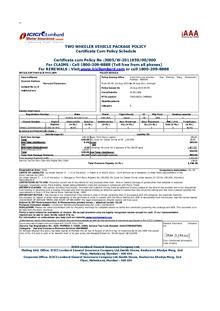Seatbelts
 |
| A 2005 Chevrolet Malibu involved in a rollover crash |
Maintenance
A well-designed and well-maintained vehicle, with good brakes, tires and well-adjusted suspension will be more controllable in an emergency and thus be better equipped to avoid collisions. Some mandatory vehicle inspection schemes include tests for some aspects of roadworthiness, such as the UK's MOT test or German TÜV conformance inspection.
The design of vehicles has also evolved to improve protection after collision, both for vehicle occupants and for those outside of the vehicle. Much of this work was led by automotive industry competition and technological innovation, leading to measures such as Saab's safety cage and reinforced roof pillars of 1946, Ford´s 1956 Lifeguard safety package, and Saab and Volvo's introduction of standard fit seatbelts in 1959. Other initiatives were accelerated as a reaction to consumer pressure, after publications such as Ralph Nader's 1965 book Unsafe at Any Speed accused motor manufacturers of indifference towards safety.
In the early 1970s British Leyland started an intensive programme of vehicle safety research, producing a number of prototype experimental safety vehicles demonstrating various innovations for occupant and pedestrian protection such as air bags, anti-lock brakes, impact-absorbing side-panels, front and rear head restraints, run-flat tires, smooth and deformable front-ends, impact-absorbing bumpers, and retractable headlamps.[41] Design has also been influenced by government legislation, such as the Euro NCAP impact test.
Common features designed to improve safety include thicker pillars, safety glass, interiors with no sharp edges, stronger bodies, other active or passive safety features, and smooth exteriors to reduce the consequences of an impact with pedestrians.
The UK Department for Transport publish road casualty statistics for each type of collision and vehicle through its Road Casualties Great Britain report.[42] These statistics show a ten to one ratio of in-vehicle fatalities between types of car. In most cars, occupants have a 2–8% chance of death in a two-car collision.
Center of gravity
 |
| An Opel Vectra involved in a rollover crash |
Now, about 40% of new US vehicles, mainly the SUVs, vans and pickup trucks that are more susceptible to rollover, are being produced with a lower center of gravity and enhanced suspension with stability control linked to its anti-lock braking system to reduce the risk of rollover and meet US federal requirements that mandate anti-rollover technology by September 2011.[44]
Motorcycles
Motorcyclists have little protection other than their clothing and helmets. This difference is reflected in the casualty statistics, where they are more than twice as likely to suffer severely after a collision. In 2005 there were 198,735 road crashes with 271,017 reported casualties on roads in Great Britain. This included 3,201 deaths (1.1%) and 28,954 serious injuries (10.7%) overall. Of these casualties 178,302 (66%) were car users and 24,824 (9%) were motorcyclists, of whom 569 were killed (2.3%) and 5,939 seriously injured (24%)








